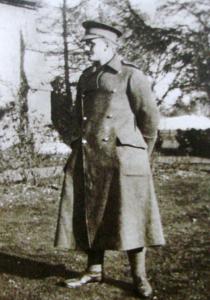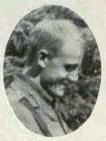
|

|
| 2nd Lieutenant Osmund Bartle WORDSWORTH | |
|
21st Company, Machine Gun Corps (Infantry) Date of birth: 17th May 1887 Date of death: 2nd April 1917 Killed in action aged 29 Commemorated on the Arras Memorial Bay 10 |

|
| Osmund Bartle Wordsworth was born at Glaston in Rutland on the 17th of May 1887 the fifth son of the Reverend Prependary Christopher Wordsworth, Chancellor of Sarum Cathedral, and Mary (nee Reeve) Wordsworth of St Nicholas Hospital, Salisbury in Wiltshire. He was educated at Mr. Pellat’s (now Durnford) School at Langton Matravers in Dorset and at Winchester College from 1899 to 1906 where he was an Exhibitioner and was a School Praetor in 1904 and Bib Praetor in 1906. While at Winchester he became Prefect of the Library, won the Warden's and the Fellow’s Prize for Greek Prose and Greek Iambics and played for the Rugby XV in 1906. In 1906 he won a Major Scholarship to Trinity College Cambridge where he achieved a BA 1st Class Tripos in 1909. In 1910 he achieved 1st Class Tripos Part II and an MA in 1913. He was a master at Lancing College in 1911 and was also a lecturer at Selwyn College from 1911 to 1914. He then moved to Canada where served on the staff of Trinity College in Toronto and was a Private in the Officer Training Corps from October 1914 to April 1915. On the 1st of May 1915 he boarded the SS “Lusitania” at New York with his sister, Ruth Mary Wordsworth, to return to England with the intention of enlisting in the army. On the 7th of May the "Lusitania" was off the Irish coast when she was hit by a torpedo fired by the U Boat U20 under the command of Kapitänleutnant Walther Schwieger. During the last minutes of the vessels sinking he gave his lifebelt to another passenger but managed to escape, being one of the last to leave the ship, and was rescued. On his return to the UK he went to stay at Selwyn College Cambridge from where he applied for a commission on the 17th of May 1915. On the 31st of May he attended a medical examination where he wrote:- "My vision for distant objects is not good without glasses, especially with the right eye". He was commissioned as a 2nd Lieutenant in the 9th Battalion Oxfordshire and Buckinghamshire Light Infantry on the 11th of June 1915 and reported to the Commandant at the Portsmouth Garrison for training on the 15th of June. He transferred to the 21st Company Machine Gun Corps (Infantry) on the 17th of April 1916 and received orders for France on the 28th of August. He embarked for France with his Company on the 31st of August 1916, landing at Boulogne later the same day, and ariving at Etaples on the 1st of September. On the 15th of November 1916 he attended a machine gun school at Camiers and rejoined his company in the field on the 26th of November. On the 9th of January 1917 he returned to the UK on leave. On the 2nd of April 1917 he brought his guns into position to support an attack at Henin-sur-Cojeul. He saw that one of the gun crews were having trouble getting into position. Refusing to allow any of those of whom he had placed in shelter to carry out his instructions he started to go himself and, soon after, was seen to fall shot through the heart. He was buried at Henin but the grave was lost in subsequent fighting. He was the author of the novel “The Happy Exchange”, published in 1914. He is commemorated on the Durnford School war memorial, on the memorial at Winchester College and on the memorial at Trinity College Cambridge. |
|
 | |
| Master |
Back